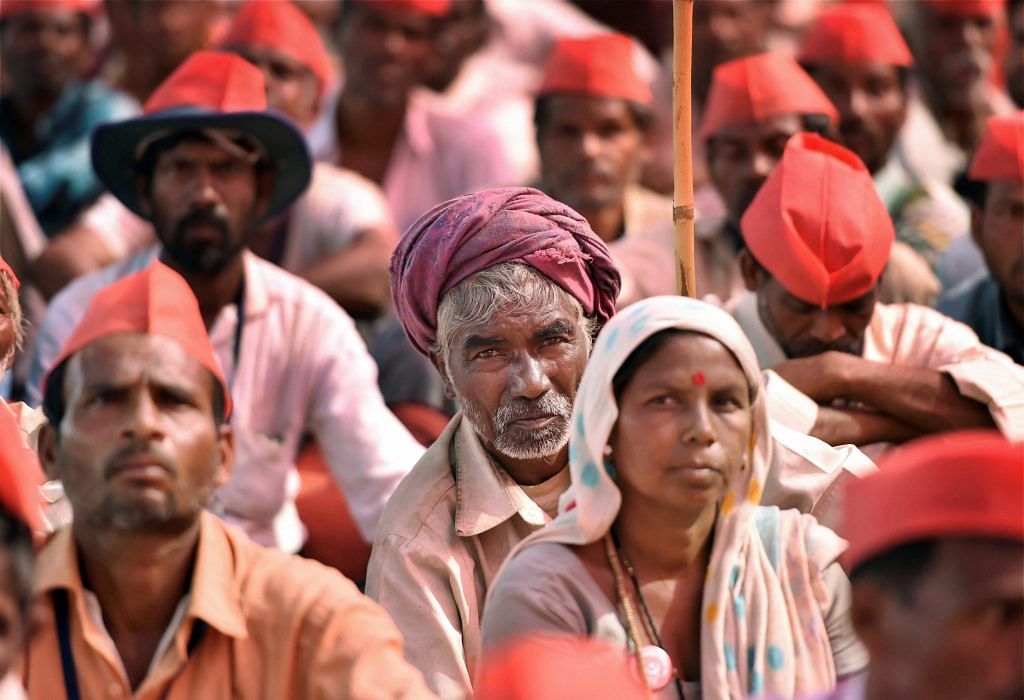Communism has been dying in Maharashtra for decades, but the energy of the farmers’ protest has breathed new life into the Reds. Can they capitalise on this?
Within a week of the “counter-revolution” in Tripura and the bulldozing of Lenin’s statue, a Red flag was unfurled over 3,000 kilometres away, in Nashik in northwestern Maharashtra. This Red flag was hoisted under the leadership of the same CPI(M) which was believed to have been vanquished by the saffron tsunami.
The political class and the media were flummoxed by this sudden resurgence of the Communists. Indeed, even the comrades themselves could not believe that their rural base was not wiped out, after all.
CPI(M)-affiliate All India Kisan Sabha (AIKS) was once a powerful movement in many parts of India. In the fifties and the sixties, the Communists defined the discourse and policy parameters. It was only in the late seventies and eighties that the ideological epicentre of the farmers’ movement shifted towards the Right, under the leadership of Sharad Joshi, who demanded that market forces should determine the price of the agricultural produce as well as the price of the vegetables and food grains in the consumer market.
Sharad Joshi even went to the extent of reviving the defunct Swatantra Party, founded by C. Rajagopalachari, which advocated free market-based capitalist principles for agriculture and industry. It was a time when radical comrades were demanding nationalisation of land and state farms.
The Communists, however, did not give up, and organised the agricultural labour, the landless, the poor and small landholders and even the middle farmers. The Green Revolution, in fact, generated huge aspirations, and along with it, widespread discontent. Even Chavan said publicly that the Green Revolution could turn Red, if the benefits did not percolate.
The Communists, though divided, were strong in the cities as well as rural areas. Most of the factories in Mumbai and Pune had strong, militant trade unions. The city of Mumbai, particularly the textile belt and the outskirts as well as Pune, were under the Red flag. Their legislative presence was limited, but powerful.
Pre- and post-liberalisation decline of the Left
It is said the Left became politically marginalised after the liberalisation of 1991, but the process of its decline had started in the eighties itself. Technological modernisation, computerisation of processes, workers’ rising expectations, the newly-emerging hierarchy on the shop floor, the white collar-blue collar divide, the rise in the employment of women and the emerging middle class slowly slipped out of the hands of the Communists.
The Communists opposed colour TVs, computers, mobile telephony, and the information-communication systems. There were conflicts within families and in factories. Young boys and girls seeking modern gadgets and fashion, media and malls, looking at the IT industry as a new window of opportunity, the new kind of jobs in advertising, marketing, management, and most importantly, the young IIT/IIM graduates getting openings in US—all this was a new phenomenon, almost foreign to the comrades.
Sons and daughters of the militant Leftists were deserting not only the ideological influence they had on them, but also the parents, who they thought were fossils. There were murmurs within the families that something was amiss. The young considered the Left ideology was “outdated”. The trade union movement had virtually disappeared from the cities, mainly after the collapse of the textile industry. The ideological blow to the psyche of many comrades came when the Soviet Union collapsed and China converted itself to “market-based socialism”.
The Kisan Long March
This was the backdrop in which the Kisan Long March took shape. The energy came from the mass sentiment of feeling cheated by the BJP and Narendra Modi. For the past four years, farmers had really tough time dealing with uncertain weather conditions, increasing debt, declining income, and rising neglect.
The AIKS and leaders like Ajit Navle and Ashok Dhavle managed to channelise the overall and widespread frustration and anger. But equally important was the support they received from the urban-lower-middle-class and working class groups, without which they could not have marched from Nashik to Mumbai for over five days.
The Kisan Long March — the term borrowed from the Long March in China under Mao in 1936 — featured men and women, old and middle-aged, who painted the entire route and Mumbai Red. Not since the sixties had the city seen such a magnificent Red, brighter on the TV screens, giving hope to the comrades of rising from the ashes like a phoenix. But will they?
Kumar Ketkar is a Congress nominee for Rajya Sabha.
